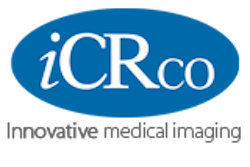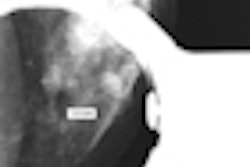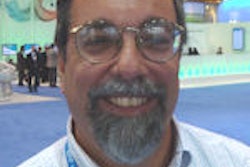"Information is the lifeblood of modern medicine. Health information technology is destined to be its circulatory system."¹
When Dr. David Blumenthal's words appeared in the New England Journal of Medicine2 last month, he was referring to the IT infrastructure the Department of Health and Human Services is building across the U.S. But his words transcended national borders and were heard around the globe.
This is not a glossy vision of the future but a clear view of today's reality as radiology discovers new ways to deliver modern medicine to remote regions of the world. One U.S.-based nongovernmental organization (NGO) that is capitalizing on this trend in radiology is Shoulder to Shoulder. With 20 years of NGO know-how, Shoulder to Shoulder is optimizing the existing global IT infrastructure to connect advanced healthcare in the U.S. and a resource-challenged population in Honduras.
On February 20, at the inauguration of its sixth primary care clinic in Honduras, Shoulder to Shoulder will demonstrate how a suite of radiology and telemedicine technology is the lifeblood of this new clinic. Equipped with digital x-ray, computed radiography, PACS, ultrasound, and a high-definition telemedicine camera, physicians will acquire medical images and send them via PACS to volunteer radiologists and other physicians associated with Shoulder to Shoulder in the U.S. Radiologists will be on hand to read the cases, provide diagnostic reports, and transmit them back via PACS to the clinic in Honduras.
“With the addition of this technology, poor people have access to the same set of services that any well-equipped health center in the U.S. has access to.”
— Jeffery E. Heck, M.D., executive director of Shoulder to Shoulder
Simultaneously, the telemedicine unit will be used to transfer electrocardiogram (ECG) images for interpretation in the U.S. and the ultrasound probe for obstetric, abdominal, and vascular imaging. Other general applications supported by the telemedicine system include otolaryngology and ophthalmology examinations.
"This is a comprehensive set of primary care tools. It is important because it is a model for providing high-tech care, including expert specialty consultations to some of the most remote and isolated areas of the developing world. With the addition of this technology, poor people have access to the same set of services that any well-equipped health center in the U.S. has access to. We not only want to provide care -- but excellent care -- to the people in those communities, and the technology will enable us to do what we have never been able to do before," said Jeffery E. Heck, M.D., who is the executive director and founder of Shoulder to Shoulder and a professor at the University of North Carolina.
"Digital radiography has enabled us to jump two generations of technology in imaging techniques. In most poor areas of the world, only wet reads are available, and the quality of the images is generally poor," Dr. Heck said. "We are leaping into the most advanced technology, which is digital radiography, allowing high-resolution radiographs to be viewed by local primary care providers, and, when needed, radiologists in the U.S."
In primary care medicine, 20% of visits by a primary care physician involve radiographic imaging, noted Dr. Heck. Until now, the clinics in rural Honduras did not have the benefits of these services.
"For example, in the past, when a person was discovered with presumed tuberculosis they would be treated on the basis of a sputum specimen alone, and there would not be a good way monitoring progress," said Dr. Heck. "The x-ray can help us make an accurate diagnosis and monitor progress of treatment."
Instrumental in garnering the equipment and IT solutions donated by U.S. medical device providers, Hayley Holland, director of research and grants for Shoulder to Shoulder, was surprised at the outpouring of generosity from the medical community. Taking the initiative, GlobalMedia donated the telemedicine equipment, and MedWeb followed suit, supporting the project with a gift of its Web-based PACS. Meanwhile, MinXray provided the digital x-ray system, and iCRco supplied the computed radiography unit. Finally, Shoulder to Shoulder acquired ultrasound probes through GlobalMedia.
"I am elated that there was a show of humanitarianism in this effort, and it was amazing how once one donor committed, another followed; there was a domino effect. It was also a testament to the powerful role IT plays in healthcare," said Holland.
Encouraging donations
Phillip Silberberg, M.D., a pediatric radiologist at Kosair Children's Hospital, Louisville, KY, and medical director of radiology and telemedicine for Shoulder to Shoulder, also played a key role in encouraging donations for the inauguration of the clinic.
"The 30,000 or more people living in the area surrounding the clinic did not previously have access to x-ray or ultrasound. With the equipment that has been obtained, not only will these images be available but they can be transmitted immediately to centers of excellence within Honduras and within the U.S. and elsewhere for consultation and collaboration," said Dr. Silberberg. "In addition, the world of telemedicine is also brought to this area, a modality that follows in the path of teleradiology. This will be a major new paradigm shift as images of the entire body, including the skin, ears, nose, and throat, heart and breath sound, ECGs, endoscopies, will also be transmittable in the same fashion."
Principal to Shoulder to Shoulder's governing mission is to provide a model for sustainable healthcare. With these technologies newly available to them, these remote Honduran clinics will now have access to a network in the global medical community.
"It is one more thing that enables us to provide quality care at the local level without having to wait for a specialist to arrive," said Dr Heck.
By Cristen Bolan
Editor, Imaging Technology News
References: 1, 2. Blumenthal, D. Launching HITECH. NEJM. Dec. 30, 2009.
Shoulder to Shoulder (www.shouldertoshoulder.org) is a private, nonprofit, nongovernmental organization formed in Cincinnati in 1996. It began providing healthcare services in western Intibuca, Honduras, in 1990, six years prior to its official incorporation. In the spirit of local empowerment, Shoulder to Shoulder worked with local community leaders in Santa Lucia to form Hombro a Hombro, a grassroots community-based, nonprofit NGO registered in Honduras. Shoulder to Shoulder and its partner Hombro a Hombro work in tandem to achieve a single mission: to develop education, nutrition, and health programs to help poor rural communities in Honduras achieve sustainable development and improve the overall health and well-being of their residents. Recognizing the success, other centers joined the effort. The group seeks to address the health, education, nutrition, and social needs of isolated communities in the western Intibuca region, the poorest region of Honduras. Shoulder to Shoulder receives financial assistance from private donors, foundations, and the constituent academic health centers. Over the past 16 years, local grass roots community organizations have improved the health and well-being of all in their communities through their established health centers, nutrition programs, school-based empowerment groups and health prevention and public health initiatives. To make a donation to Shoulder to Shoulder, please contact: Hayley B. Holland, director of research and grants, Shoulder to Shoulder, at [email protected] or 513-685-7008.
Imaging Technology News (www.itnonline.net) is a partner of Shoulder to Shoulder, creating awareness of the organization's mission and helping drive medical equipment donations.
GlobalMedia Group (www.globalmedia.com) provides the TotalExam, a high-definition capable, digital exam camera that combines dual-focus, freeze-frame capture, and electronic image polarization in one medical device. This multipurpose digital camera has wide applications in primary care, emergency medicine/trauma care, dermatology, ophthalmology, and wound care and is an excellent device to document abuse.
Related Reading
Haiti after the earthquake: Idaho RT assists relief effort, January 28, 2010
Haiti after the earthquake: A radiologist's story, January 22, 2010
Radiology mobilizes to help Haiti in wake of devastating earthquake, January 19, 2010
For doctors in Haiti, worst is yet to come, January 19, 2010
Copyright © 2010 Imaging Technology News



















